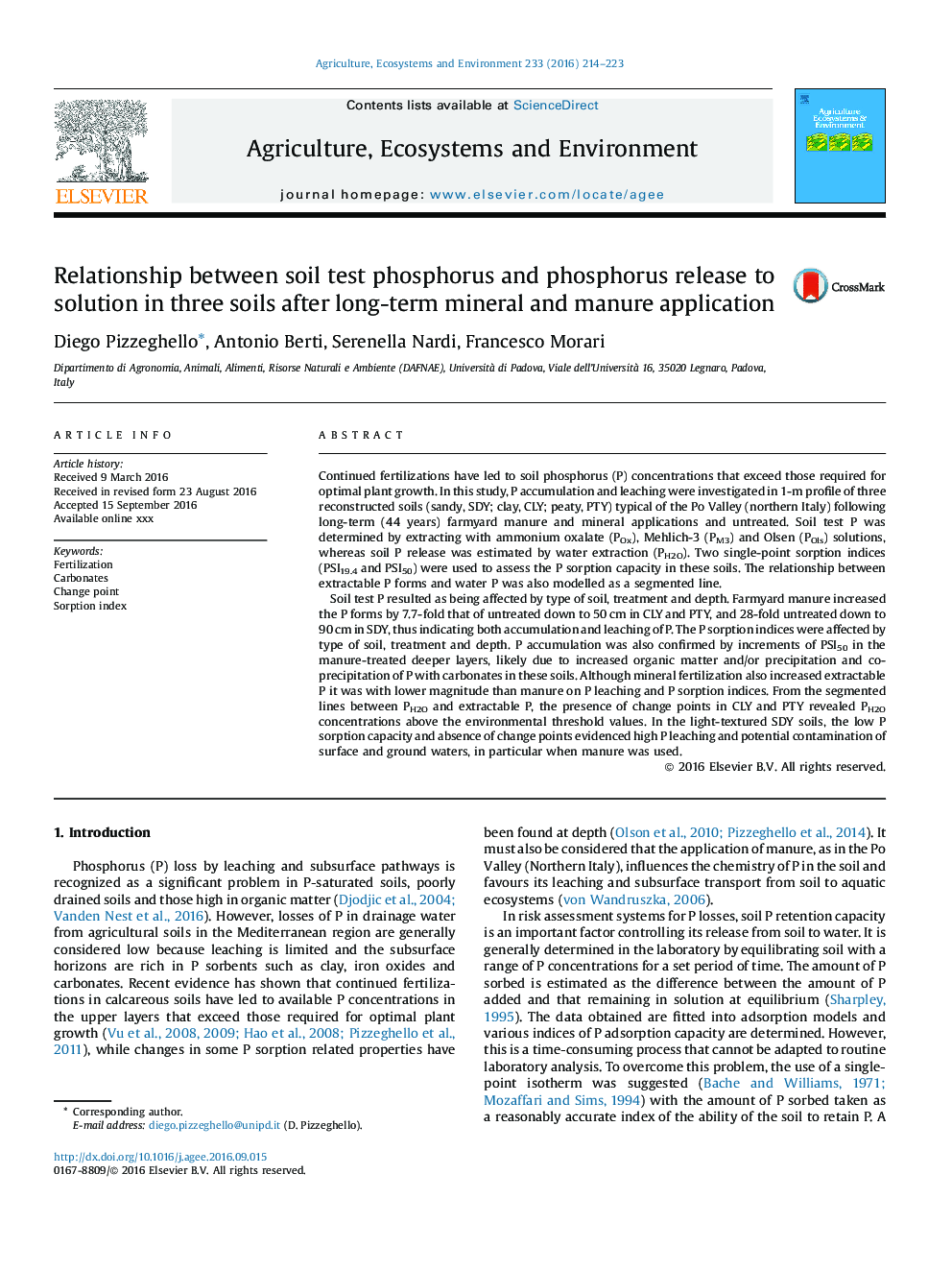| Article ID | Journal | Published Year | Pages | File Type |
|---|---|---|---|---|
| 8487274 | Agriculture, Ecosystems & Environment | 2016 | 10 Pages |
Abstract
Soil test P resulted as being affected by type of soil, treatment and depth. Farmyard manure increased the P forms by 7.7-fold that of untreated down to 50Â cm in CLY and PTY, and 28-fold untreated down to 90Â cm in SDY, thus indicating both accumulation and leaching of P. The P sorption indices were affected by type of soil, treatment and depth. P accumulation was also confirmed by increments of PSI50 in the manure-treated deeper layers, likely due to increased organic matter and/or precipitation and co-precipitation of P with carbonates in these soils. Although mineral fertilization also increased extractable P it was with lower magnitude than manure on P leaching and P sorption indices. From the segmented lines between PH2O and extractable P, the presence of change points in CLY and PTY revealed PH2O concentrations above the environmental threshold values. In the light-textured SDY soils, the low P sorption capacity and absence of change points evidenced high P leaching and potential contamination of surface and ground waters, in particular when manure was used.
Keywords
Related Topics
Life Sciences
Agricultural and Biological Sciences
Agronomy and Crop Science
Authors
Diego Pizzeghello, Antonio Berti, Serenella Nardi, Francesco Morari,
